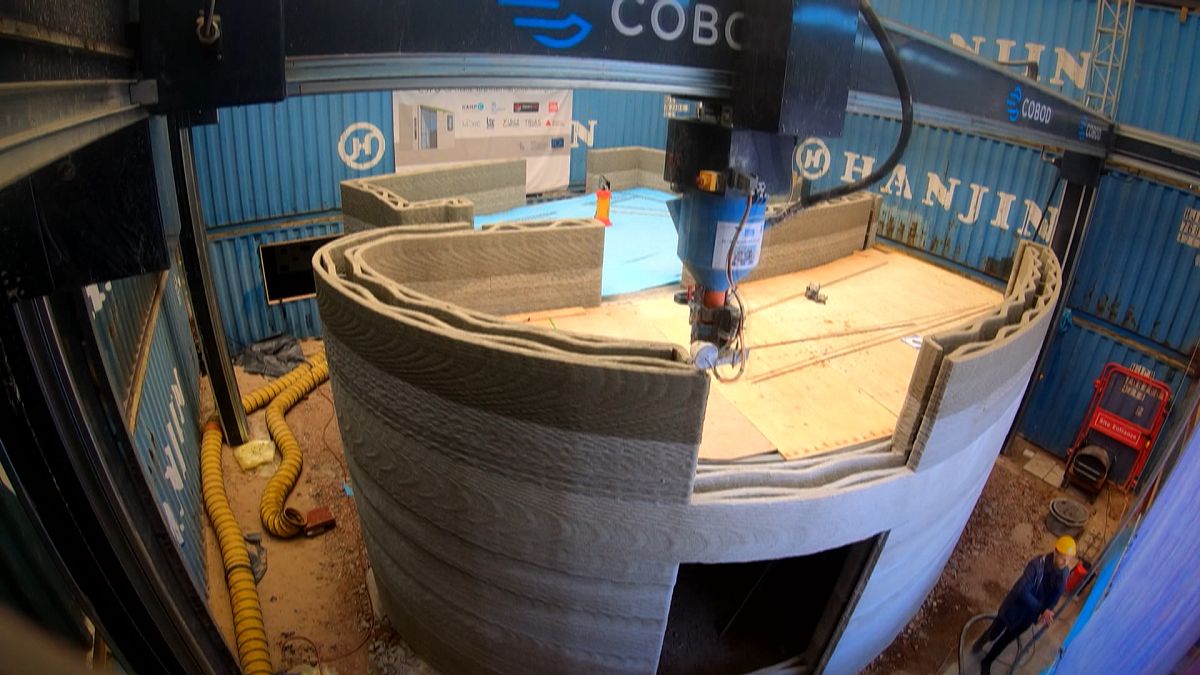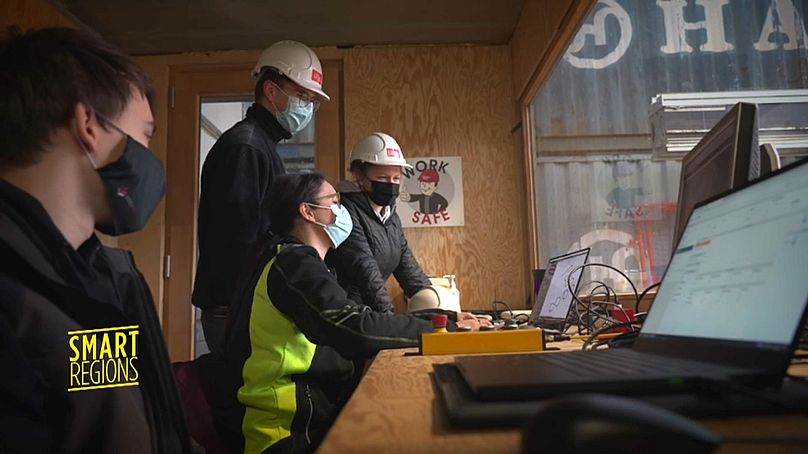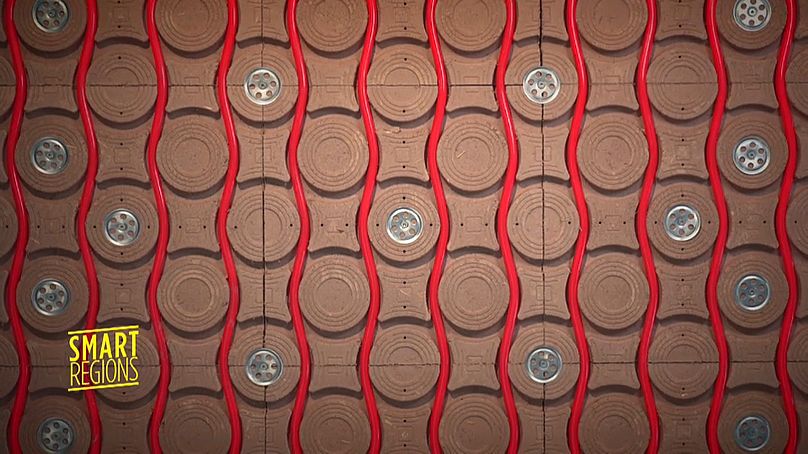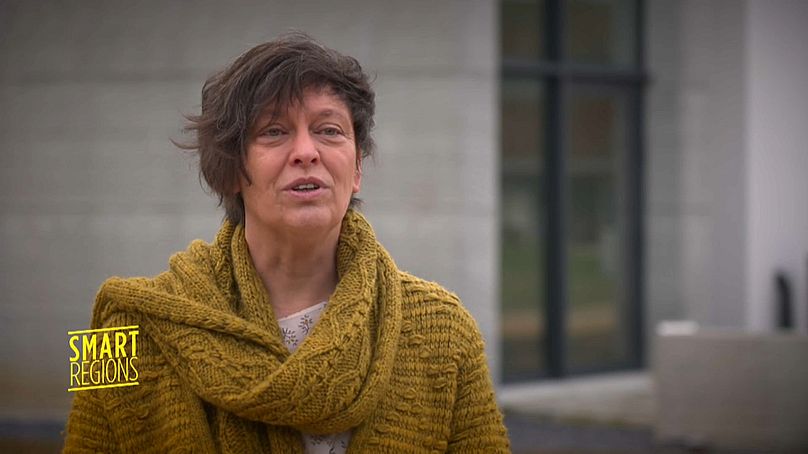The first one-piece, two-storey building made entirely using a concrete 3D printer stands as excellent example of how the European construction sector could be revolutionised. It's quick to build, uses less material and is more eco-friendly.
The campus of experimental Architecture in Belgium is home to the World's ´first single-piece concrete 3D printed house.
Europe's largest concrete 3D printer was used to build the two-storey, 90 square metre dwelling.
The very same printer is now being used by students to develop new sustainable building solutions for Europe's construction industry.
Charlotte Van Antenaeken a student on a project using this printer from the Thomas More Hogeschool in Belgium tells us that "with this technology, we were able to print a whole house. Now we want to move on, and use this 3D printer in efficient ways to create new proposals".
Her project is focusing on how they can print surfaces with stronger architectural structures that can withstand more weight.
Developers claim the printed house required 60% less material than a normally constructed building of its size. The two-storey building had a total budget of 1.6 million euros, 40% of this was funded by the EU. It took months of preparations, but only three weeks to fully build.
The temperature and humidity inside the low-energy building are controlled by an innovative clay-based technology installed in the ceiling. Marc Smets, the Benelux official distributor for Argillatherm, who specialises in this clay system says that clay is good because it's a "circular product". "You can always reuse it. The clay is pre-pressed. It is a dried system. So we can place tubes in it and in these tubes we deliver warm and cool water", he adds.
Regional authorities say the hi-tech initiative could help modernise the European construction industry and make it more sustainable.
According to Kathleen Helsen, the deputy of the Province of Antwerp, the construction sector works in a very traditional way, "it is still using a lot of materials, producing too much waste". She believes this approach needs to be changed. However, she says that "if we want to help convince the construction sector to invest in automation and in the digital world, we need to show them examples of good practice. That's why it helped to print this house".
Developers say the house could encourage other circular economy initiatives in the EU's building sector that employs around 5 million people.




